 In sports, change is constant. No session, practice or game unfolds exactly as planned, and the best coaches aren’t the ones who simply have a great strategy–they’re the ones who can adapt on the fly, helping their athletes navigate uncertainty, pressure, and setbacks with confidence. This ability to adjust in real-time is what I call mental agility. It’s the skill of being able to shift perspectives, reframe challenges, and respond flexibly under pressure.
In sports, change is constant. No session, practice or game unfolds exactly as planned, and the best coaches aren’t the ones who simply have a great strategy–they’re the ones who can adapt on the fly, helping their athletes navigate uncertainty, pressure, and setbacks with confidence. This ability to adjust in real-time is what I call mental agility. It’s the skill of being able to shift perspectives, reframe challenges, and respond flexibly under pressure.
Research has shown that mental agility is a critical component of effective leadership, particularly in high-stakes environments like sports. A study by DeRue et al. (2011) found that leaders who exhibit cognitive flexibility–meaning they can shift strategies, perspectives, and responses when needed–are more effective at navigating uncertainty and inspiring their teams. When applied to coaching, this means being able to read the game, assess the needs of your athletes in the moment, and make decisions without being trapped by rigid thinking.
Moving from Rigid Thinking to Adaptability
Rigid thinking in coaching often looks like sticking to a pre-determined game plan, resisting new approaches, or expecting athletes to fit into a single mold. While structure and consistency are valuable, over-reliance on fixed strategies limits growth–both for you and your athletes. Adaptability, on the other hand, allows you to make real-time adjustments that optimize performance and learning.
Psychological research supports the idea that cognitive flexibility–the ability to shift thinking based on new information–is a key factor in decision-making and performance under pressure (Martin & Rubin, 1995). Coaches who embrace adaptability can adjust their approach based on the game situation, athlete needs, and even their own energy levels.
How to Cultivate Adaptability:
Adaptability is a skill that can be developed through intentional practice, reflection, and openness to change. One of the most effective ways to build adaptability as a coach is through scenario-based thinking–mentally rehearsing different session, game or practice situations and considering multiple responses. When it comes to sport coaches, for example, by regularly envisioning how a game or practice might unfold, including unexpected challenges such as a key player getting injured or an opponent shifting tactics, coaches can prepare themselves to pivot quickly rather than reacting with frustration or rigidity. This mental rehearsal strengthens cognitive flexibility, allowing coaches to make real-time adjustments with confidence.
Another key component of adaptability is seeking and valuing feedback from athletes. Often, players have unique insights into what is happening on the field or court, or in training sessions, and a coach who actively listens to their perspective can make more informed decisions. Encouraging open communication and inviting athletes to share what they see, feel, or need fosters a culture of trust and responsiveness. It also empowers athletes to take ownership of their performance, reinforcing adaptability as a shared value rather than a top-down directive.
Finally, adopting a growth mindset-the belief that abilities and strategies can evolve through effort and learning-is essential for cultivating adaptability. Coaches who see challenges as opportunities to refine their approach rather than as roadblocks to success will be better equipped to adjust when things don’t go as planned.
This mental attitude also models resilience for athletes, showing them that setbacks are a natural and necessary part of growth. By consistently reframing obstacles as learning experiences, coaches can create an environment where adaptability becomes second nature for both themselves and their teams.
 Managing Emotions & Reactions in Real-Time
Managing Emotions & Reactions in Real-Time
A coach’s emotional regulation can make or break an athlete or team’s confidence and focus. How you respond in emotionally charged moments directly impacts how your athletes handle stress and adversity. Research by Gross (2002) on emotion regulation theory suggests that leaders who can manage their emotional responses effectively create a more resilient and composed team environment.
Instead of reacting impulsively-whether it’s frustration at a referee’s call or disappointment in an athlete’s mistake-mentally agile coaches use strategies like:
- Pausing before responding. A deep breath or short reflection before reacting can prevent emotional outbursts.
- Reframing the situation. Instead of seeing a setback as a failure, reframe it as a learning moment.
- Modeling composure. Athletes mirror their coach’s energy-calm confidence is contagious.
Like athletes, many coaches are conditioned to operate with a critical mindset–analyzing mistakes, focusing on what went wrong, and being hyper-aware of weaknesses of their athletes, teams and even themselves. While self-assessment is important, staying in a critical mindset can lead to overthinking, fear of failure, and anxiety.
Creative thinking, on the other hand, allows coaches to problem-solve in the moment, trust their instincts, and find innovative ways to succeed. Research on dual-process theory (Evans, 2008) explains that our brains have two modes of thinking:
- System 1 (Creative Thinking) – Fast, intuitive, and automatic decision-making.
- System 2 (Critical Thinking) – Slow, analytical, and effortful thinking.
Coaches (and athletes) need both but the key is knowing when to shift between them.
Setbacks are inevitable in sports, but how a coach frames them determines whether athletes grow or spiral into self-doubt. Resilient athletes aren’t those who never fail–they’re the ones who see failure as feedback.
Research on resilience theory (Fletcher & Sarkar, 2012) highlights that athletes who view failure as a learning tool rather than a threat develop greater mental toughness and long-term success. Coaches play a critical role in fostering this mindset by normalizing mistakes as part of growth. Here are three effective ways to shift the perception after setbacks (for you and for them):
- Debrief with a solutions-based approach. After a tough game or training session, focus on “What did we learn?” rather than “What went wrong?”
- Celebrate effort and progress. Acknowledge improvements, not just outcomes.
- Tell failure stories. Share and reflect on examples of coaches, athletes or teams who overcame setbacks and came back stronger.
Mental agility is what separates good coaches from great ones. The ability to adjust, manage emotions, foster creative thinking, and turn failure into fuel will not only make you a stronger leader–it will also help your athletes thrive under pressure. Coaching isn’t about having all the answers in advance; it’s about staying open, responsive, and willing to shift in the moment.
Let’s see how you rate in this coaching skill.
Self-Assessment: The Mental Agility Ability
Rate yourself on a scale from 1-5 for each question:
(1 = Strongly Disagree, 5 = Strongly Agree)
- I can adjust my coaching strategy quickly when faced with unexpected challenges.
- I manage my emotions effectively under pressure and stay composed in tough situations.
- I encourage my athletes to shift from critical thinking (self-judgment) to creative problem-solving.
- I view mistakes—both mine and my athletes’—as opportunities for learning and growth.
- I actively seek feedback from my athletes and staff to refine my coaching approach.
- I practice scenario-based thinking and mentally rehearse how to adapt to different situations.
- I embrace change as part of the coaching journey rather than resisting it.
- I model adaptability and a growth mindset for my athletes by demonstrating resilience in the face of adversity.
Scoring & Next Steps: (Total Score __________)
36-40 points: Mental Agility Mastery
You have a high level of adaptability and can adjust quickly to changing circumstances. Your ability to stay composed and teach resilience makes you a strong leader. Continue to refine your skills by challenging yourself in new ways—consider sharing your strategies with other coaches or leading discussions on adaptability in coaching communities.
28-35 points: Mentally Agile, but Still Growing
You are adaptable in many areas, but there may be situations where you struggle to adjust or regulate your emotions under pressure. Identify the moments where you feel most challenged and work on strengthening those areas. Practicing real-time emotional regulation techniques, such as breathwork or reframing negative thoughts, can help improve your agility.
20-27 points: Developing Flexibility in Your Coaching
You recognize the importance of adaptability, but it may not yet be a natural or consistent part of your coaching style. Consider implementing scenario-based thinking into your preparation and actively seeking feedback from athletes and staff. Small, intentional adjustments will help build confidence in your ability to pivot when needed.
Below 20 points: Time to Strengthen Your Adaptability Muscle
You may find yourself reacting rigidly to challenges or struggling to adjust under pressure. The good news? Adaptability is a skill that can be developed with practice. Start by identifying one area where you resist change and intentionally work on shifting your approach. Embrace failure as a learning tool and make mental agility a focus in both your coaching and personal growth.
We’d love to hear from you- what did you learn, what was your rating and how will you continue to evolve in this skillset?
Read more blogs like this from Coach Julie:
An Unwritten Rule of Coaching Athletes
Your Daughter Is Going Pro pro…probably not.
Understanding Learning Styles of Female Athletes: Amplifying Performance Through Tailored Coaching
Coaching Female Athletes-The Art & The Science
What Every Coach Needs to Know About the Female Athlete’s Hormonal Cycle
If you enjoyed this article and know other coaches and trainers who could benefit from the content in this blog, please share in your social media channels.
~ Julie Hatfield-Still

Julie is an Author, CEO and Coach. She is the President & Founder of the Non-Profit Beyond The Game Alliance where they offer a full suite of workshops and support for teams, coaches and parents. In addition to her work as a business consultant and coach of coaches, leaders and entrepreneurs.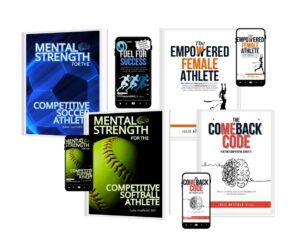
Julie is a Speed Development Specialist and Inner-Game Coach in the college, high school and youth levels.
Visit Julie’s Author Page
Resources used in this article:
- DeRue, D. S., Ashford, S. J., & Myers, C. G. (2011). Learning agility: A construct whose time has come. The Academy of Management Perspectives, 25(4), 149-165. https://doi.org/10.5465/amp.2011.0121
- Evans, J. S. B. (2008). Dual-processing accounts of reasoning, judgment, and social cognition. Annual Review of Psychology, 59, 255-278. https://doi.org/10.1146/annurev.psych.59.103006.093629
- Fletcher, D., & Sarkar, M. (2012). A grounded theory of psychological resilience in Olympic champions. Psychology of Sport and Exercise, 13(5), 669-678. https://doi.org/10.1016/j.psychsport.2012.04.007
- Gross, J. J. (2002). Emotion regulation: Affective, cognitive, and social consequences. Psychophysiology, 39(3), 281-291. https://doi.org/10.1017/S0048577201393198
- Martin, M. M., & Rubin, R. B. (1995). A new measure of cognitive flexibility. Psychological Reports, 76(2), 623-626. https://doi.org/10.2466/pr0.1995.76.2.623
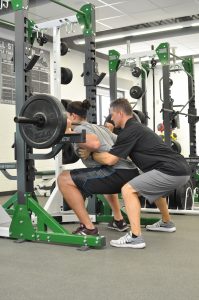 Where Most Traditional Strength Training Falls Short
Where Most Traditional Strength Training Falls Short
 As a coach or trainer, understanding how athletes learn best is crucial to helping them reach their full potential. This is especially true for female athletes, who, as a whole, often thrive when they feel supported, understood, and connected. By recognizing and understanding their learning styles, you can not only improve their performance but also foster a culture of trust and rapport. In this blog I’ll cover the main learning styles of female athletes and how to use them to amplify your athletes experience.
As a coach or trainer, understanding how athletes learn best is crucial to helping them reach their full potential. This is especially true for female athletes, who, as a whole, often thrive when they feel supported, understood, and connected. By recognizing and understanding their learning styles, you can not only improve their performance but also foster a culture of trust and rapport. In this blog I’ll cover the main learning styles of female athletes and how to use them to amplify your athletes experience. Ages 6-9:
Ages 6-9:

 Doug Heslip is the owner of Heslip Elite Sports Performance Training in Negaunee, MI and the creator of Seek & Destroy – Elite Running Back Drills a video product for football coaches. He works with young athletes in a variety of sports and teaches football coaches how to incorporate speed & agility training into their sessions.
Doug Heslip is the owner of Heslip Elite Sports Performance Training in Negaunee, MI and the creator of Seek & Destroy – Elite Running Back Drills a video product for football coaches. He works with young athletes in a variety of sports and teaches football coaches how to incorporate speed & agility training into their sessions.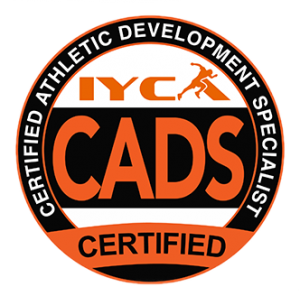
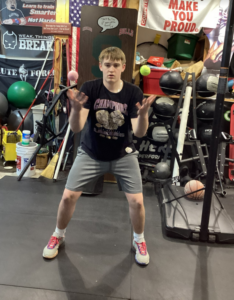
 Helping female athletes regain confidence after a mistake is about more than just overcoming the moment—it’s about building resilience, self-awareness, and a growth mindset that will carry them through future challenges.
Helping female athletes regain confidence after a mistake is about more than just overcoming the moment—it’s about building resilience, self-awareness, and a growth mindset that will carry them through future challenges.
 Coaching female athletes is both a science and an art. It requires understanding not only the physical and tactical aspects of sport but also the unique challenges and opportunities that female athletes face.
Coaching female athletes is both a science and an art. It requires understanding not only the physical and tactical aspects of sport but also the unique challenges and opportunities that female athletes face. One of the key elements in coaching female athletes is building confidence.
One of the key elements in coaching female athletes is building confidence. Effective communication is essential in coaching female athletes. Research shows that women and girls tend to place a higher value on relationships and communication styles that emphasize collaboration.
Effective communication is essential in coaching female athletes. Research shows that women and girls tend to place a higher value on relationships and communication styles that emphasize collaboration. Coaching female athletes requires a nuanced approach that takes into account their psychological, emotional, and physiological needs.
Coaching female athletes requires a nuanced approach that takes into account their psychological, emotional, and physiological needs. Which is exactly why we have partnered with the Tucker Center for Research on Girls & Women in Sports to provide you with FREE Access to
Which is exactly why we have partnered with the Tucker Center for Research on Girls & Women in Sports to provide you with FREE Access to 
 Jim Kielbaso is the President of the IYCA and Owner of
Jim Kielbaso is the President of the IYCA and Owner of  Warm-Ups, why bother? Great question! In this blog I share 3 Massive Benefits of warm-ups.
Warm-Ups, why bother? Great question! In this blog I share 3 Massive Benefits of warm-ups.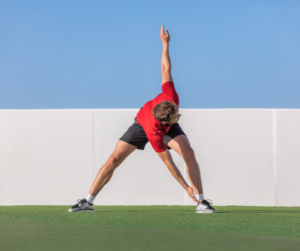 Massive Benefit #2: Reducing Injury Risk
Massive Benefit #2: Reducing Injury Risk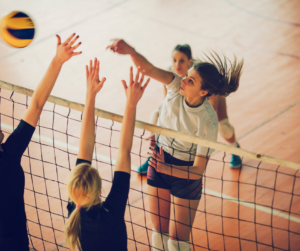 In this article we are discussing power development for athletes.
In this article we are discussing power development for athletes.

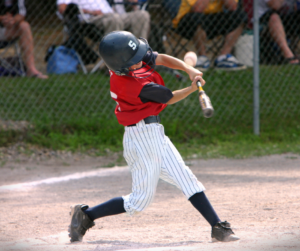 Rotational Power Development for Hitting & Throwing Sports can be overlooked but it is extremely beneficial for sports like baseball, softball, football, track, basketball and many others.
Rotational Power Development for Hitting & Throwing Sports can be overlooked but it is extremely beneficial for sports like baseball, softball, football, track, basketball and many others.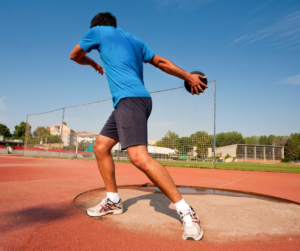 performance and injury prevention.
performance and injury prevention.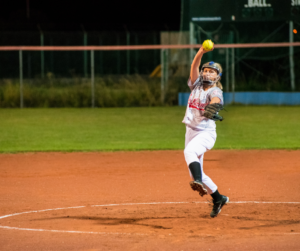 MB Rotation/Scoop Toss
MB Rotation/Scoop Toss 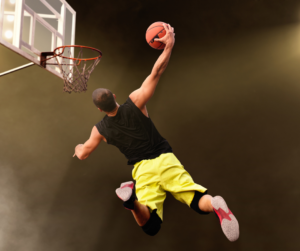 Pogo Jumps are one of the best exercises to reduce ground contact time and get athletes used to popping into the ground and reproducing that force quickly in the upward direction.
Pogo Jumps are one of the best exercises to reduce ground contact time and get athletes used to popping into the ground and reproducing that force quickly in the upward direction.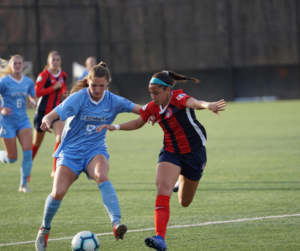 In soccer, speed is a multidimensional skill that goes beyond mere running speed. There are principles of Soccer Speed, that when applied, can be highly effective.
In soccer, speed is a multidimensional skill that goes beyond mere running speed. There are principles of Soccer Speed, that when applied, can be highly effective.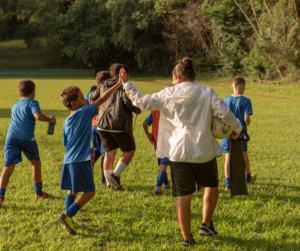
 Beni is an IYCA Ambassador, Entrepreneur and CEO. He’s earned UEFA coaching badges and a BA in Physical Fitness & Sports Conditioning. He has professional experience across soccer, golf, and rugby, expanding programs in Texas and Ireland. He has founded GameLikeSoccerCoaching and BBsports Fitness and Nutrition.
Beni is an IYCA Ambassador, Entrepreneur and CEO. He’s earned UEFA coaching badges and a BA in Physical Fitness & Sports Conditioning. He has professional experience across soccer, golf, and rugby, expanding programs in Texas and Ireland. He has founded GameLikeSoccerCoaching and BBsports Fitness and Nutrition.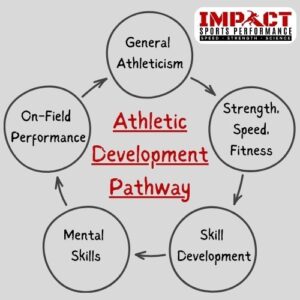 This is really the base, or foundation, for all athletes. While I know we could sit here and name off a dozen or so traits that could fall under this category, I think it’s best to narrow it down to a handful that I am sure we can agree make up the dominating percentage of athleticism. Those traits are:
This is really the base, or foundation, for all athletes. While I know we could sit here and name off a dozen or so traits that could fall under this category, I think it’s best to narrow it down to a handful that I am sure we can agree make up the dominating percentage of athleticism. Those traits are: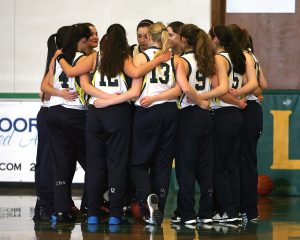 The second stop on this journey through the Athletic Development Pathway is Strength, Speed, and Fitness. Just like General Athleticism, this CAN and SHOULD be trained throughout the entire year…yes even during the competition season.
The second stop on this journey through the Athletic Development Pathway is Strength, Speed, and Fitness. Just like General Athleticism, this CAN and SHOULD be trained throughout the entire year…yes even during the competition season.

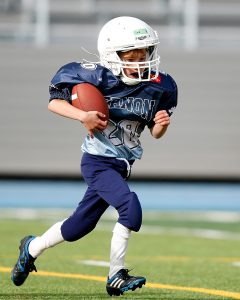 As a coach, this is a very special pillar because we get to witness our athlete’s success and growth after all their hard work and time put into training. It is also where we will get a lot of feedback on what changed over the course of the training and what still needs work.
As a coach, this is a very special pillar because we get to witness our athlete’s success and growth after all their hard work and time put into training. It is also where we will get a lot of feedback on what changed over the course of the training and what still needs work. -Cole Walderzak-BS, HSSCS, CSAS, CSCS
-Cole Walderzak-BS, HSSCS, CSAS, CSCS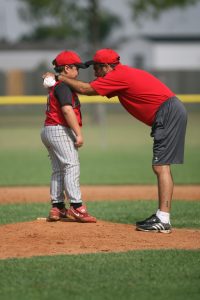 Coaching youth, is a specialist role and we must treat it as such. Obtaining the label “coach” doesn’t make a instantly qualified coach.
Coaching youth, is a specialist role and we must treat it as such. Obtaining the label “coach” doesn’t make a instantly qualified coach. It was no surprise that the athletes polled expressed that their favorite coaches were those who were most effective and that their least favorite coaches had more of the characteristics expressed as ‘ineffective’.
It was no surprise that the athletes polled expressed that their favorite coaches were those who were most effective and that their least favorite coaches had more of the characteristics expressed as ‘ineffective’.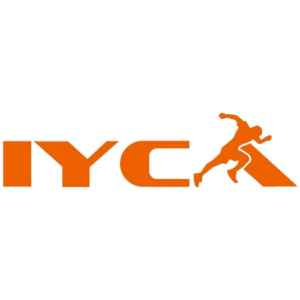
 As an industry, we are playing a losing game right now and it’s time to look in the mirror. Consider this, if seven out of ten employees quit their job at a company due to burnout or overuse, it’s fair to assume the company would be concerned.
As an industry, we are playing a losing game right now and it’s time to look in the mirror. Consider this, if seven out of ten employees quit their job at a company due to burnout or overuse, it’s fair to assume the company would be concerned.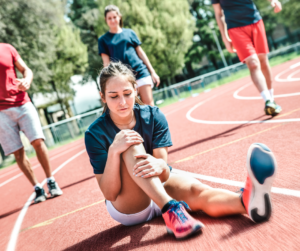
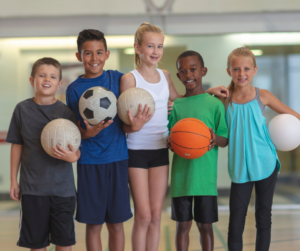
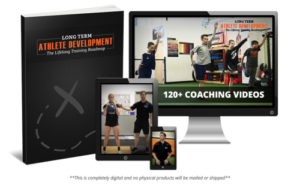 If you are looking to learn more and further your knowledge on how to develop athletes long term in a healthy and appropriate way but aren’t in need of a certification, then a great next step would be
If you are looking to learn more and further your knowledge on how to develop athletes long term in a healthy and appropriate way but aren’t in need of a certification, then a great next step would be  Athletic development across the lifespan is a complex process that is heavily influenced
Athletic development across the lifespan is a complex process that is heavily influenced 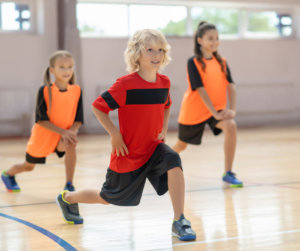 Developing the fundamental movement skills (e.g., walking, running, and jumping) happens early on in a child’s life. Unfortunately, being unable to perform fundamental movement skills can restrict later opportunities, which is why it is vital to develop physical literacy early in the child’s life.
Developing the fundamental movement skills (e.g., walking, running, and jumping) happens early on in a child’s life. Unfortunately, being unable to perform fundamental movement skills can restrict later opportunities, which is why it is vital to develop physical literacy early in the child’s life. 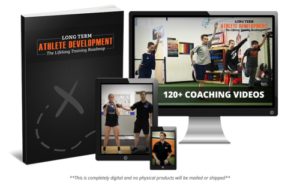 The very first step in any effort towards change, is to gain education. Our
The very first step in any effort towards change, is to gain education. Our